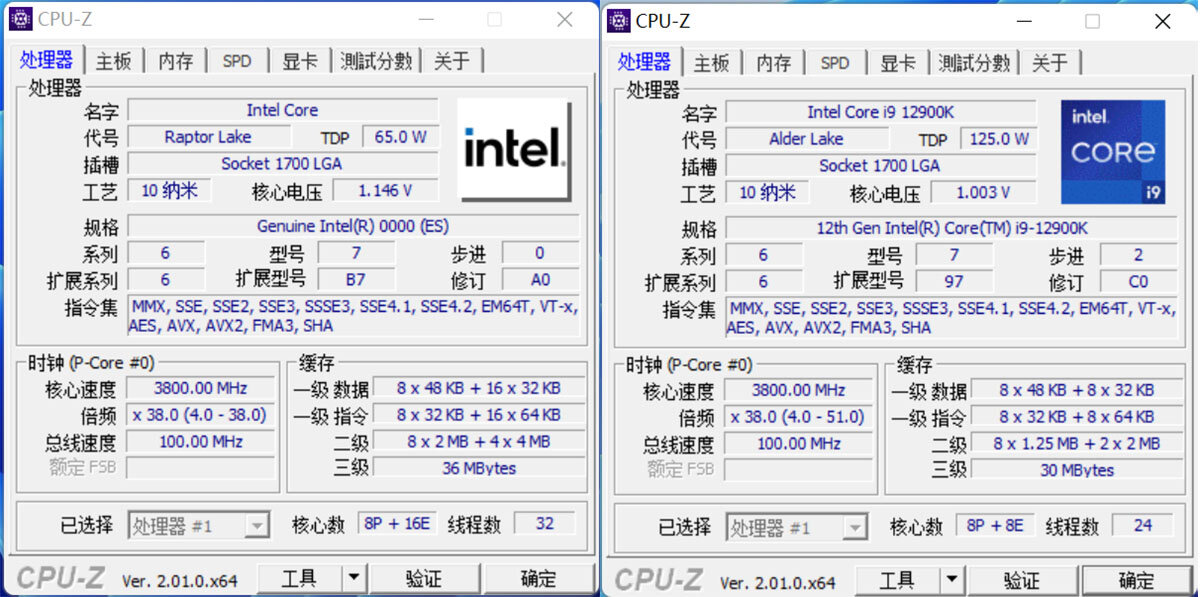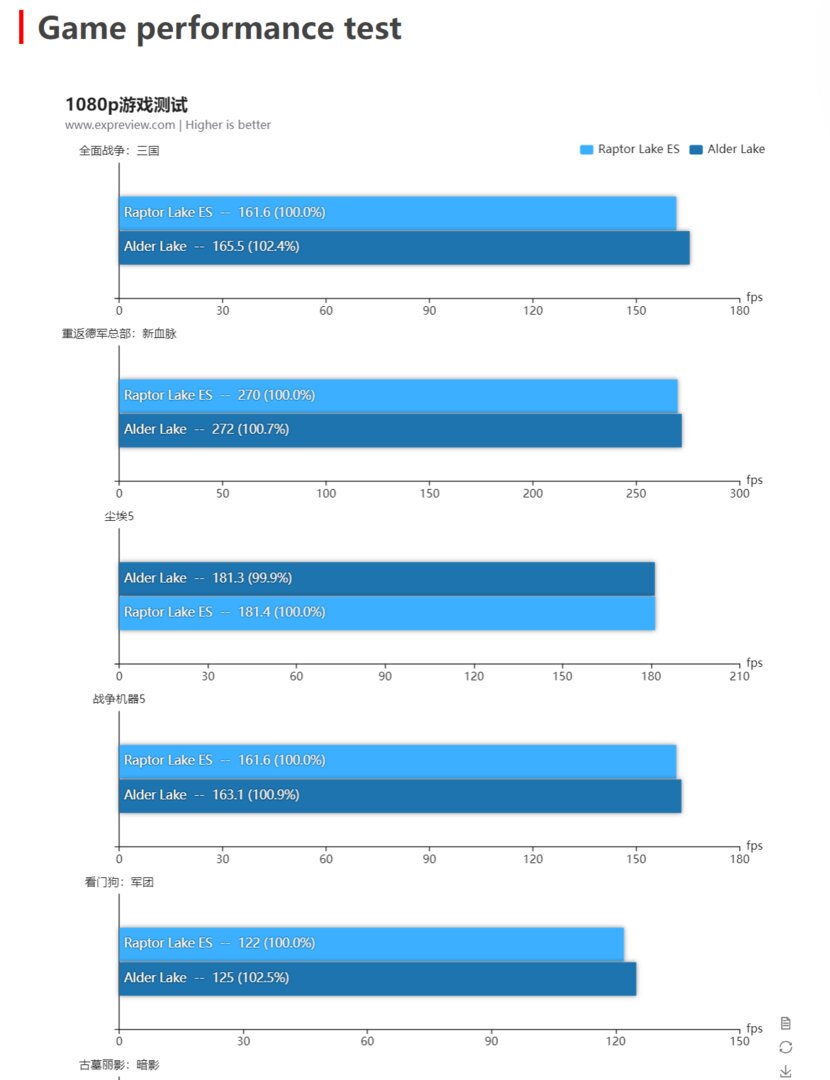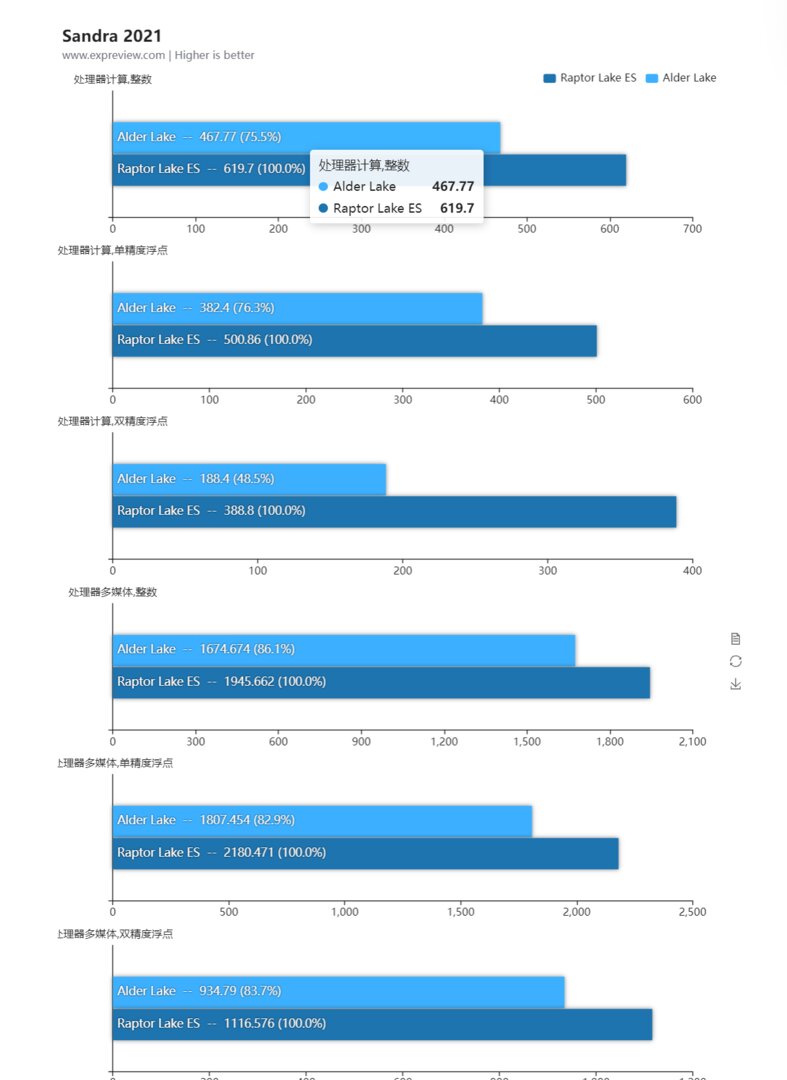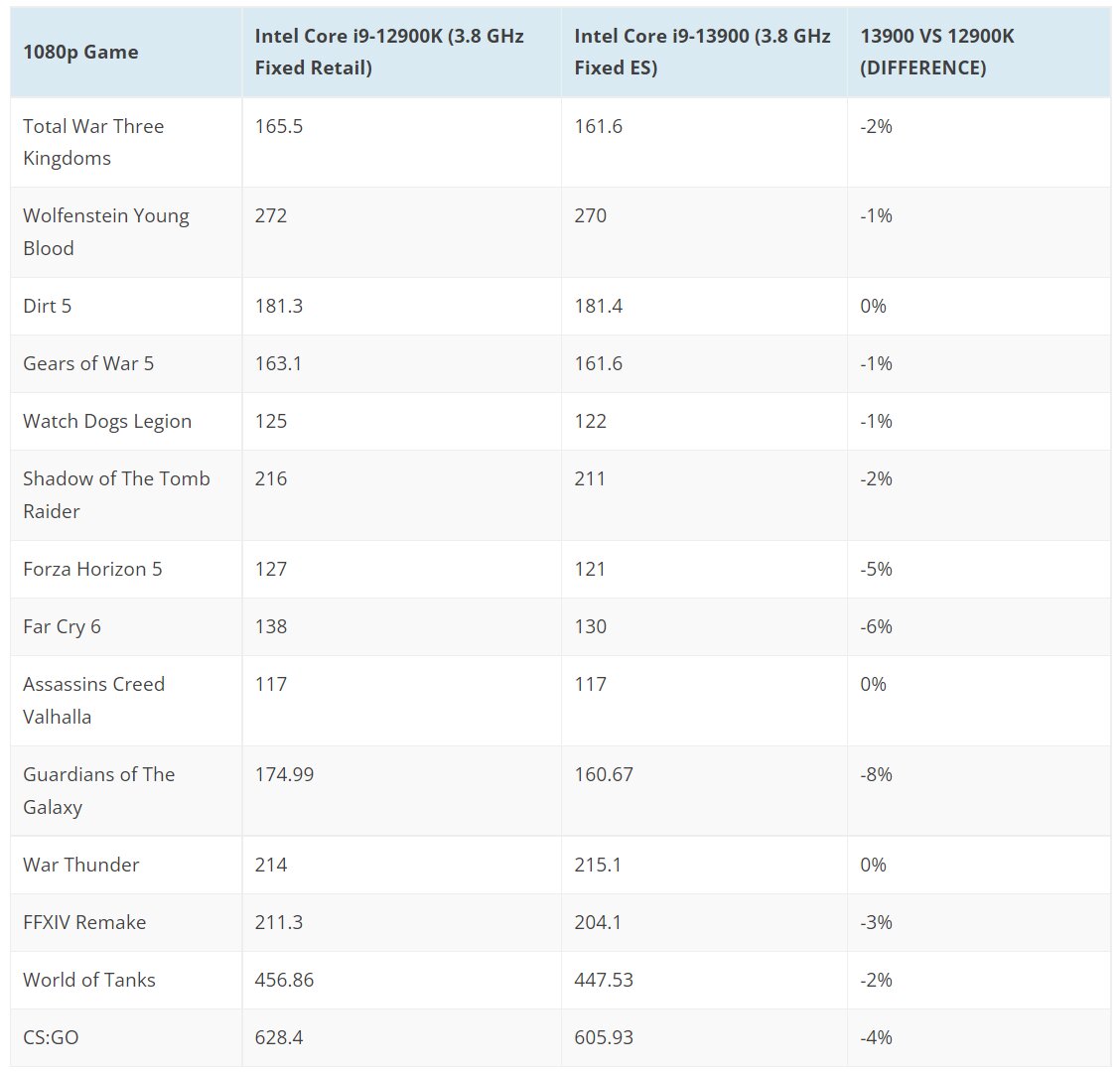Website Expreview apparently got their hands on a preproduction 24-core, 32-thread Intel Raptor Lake and pitted it against Intel Alder Lake at the same clock. However, the results do not provide a conclusive picture.
The Raptor Lake CPU is classified as a sample of a “Core i9-13900”; however, the clock rate of 3.8 GHz for the eight performance cores (P cores) is significantly lower than expected for the finished product. In addition, there are doubled the efficiency cores (E-Cores) compared to Alder Lake to 16 as well as the well-known plus in the L2 cache.
 CPU-Z screenshot of Raptor Lake ES and Alder Lake (Image: Expreview)
CPU-Z screenshot of Raptor Lake ES and Alder Lake (Image: Expreview)In keeping with the low clock, the sample is given a TDP of 65 watts using the CPU-Z tool. The Intel Core i9-12900K used for the direct performance comparison, on the other hand, has a TDP of 125 watts and works normally at up to 5.1 GHz. However, to make the comparison fair, the clock of the Alder Lake processor was limited to the 3.8 GHz of the Raptor Lake sample.
Raptor Lake in Benchmarks
In the numerous tests with applications such as Sandra 2021, 7-zip, Cinebench or Blender, at least when using several threads, there is a significant increase in performance of usually around 20 or 30 percent in favor of the newcomer equipped with more cores. The result, which is more than twice as high (+106%) in the multi-FP64 test of the Sandra benchmark suite, is clearly out of line. There was only 13 percent more performance in the x265 benchmark.
-
 Raptor Lake ES vs. Alder Lake app benchmarks (both at 3.8 GHz) (Image: Expreview)
Raptor Lake ES vs. Alder Lake app benchmarks (both at 3.8 GHz) (Image: Expreview)
Image 1 of 2
 Game -Raptor Lake ES vs. Alder Lake benchmarks (both at 3.8 GHz) (Image: Expreview)
Game -Raptor Lake ES vs. Alder Lake benchmarks (both at 3.8 GHz) (Image: Expreview)However, the single-thread benchmarks surprisingly show a lower performance with the same clock. Raptor Lake lags behind by 8 percent in the 3DMark CPU test, and by as much as 11 percent in Cinebench R23. However, confusion is caused by the fact that the colors of the two CPUs sometimes swap in the diagrams. This also potentially causes errors in the overviews created by VideoCardz and WCCFtech; at least in the SuperPi benchmark there should be a plus instead of a minus.
 Raptor Lake ES vs Alder Lake app benchmarks (both at 3.8GHz) (Image: VideoCardz)
Raptor Lake ES vs Alder Lake app benchmarks (both at 3.8GHz) (Image: VideoCardz)On average, however, for all of these app benchmarks, the increase in performance is around 20 percent in favor of the engineering sample from Raptor Lake. Previously, benchmarks of a comparable Raptor Lake sample had already been published by the makers of the SiSoft Sandra analysis tool, which showed the chip to be 33 to 50 percent faster than Alder Lake in synthetic ALU and FPU tests.
< h2 class="text-width text-h2" id="section_raptor_lake_in_games">Raptor Lake in games
The Expreview gaming benchmarks are similar to the Single-thread benchmarks are modest for the pattern. Most of the time it is level with Alder Lake, but sometimes the newcomer is a few percentage points behind its predecessor.
 Game benchmarks of Raptor Lake ES vs. Alder Lake (both at 3.8 GHz) (Image: WCCFTech)
Game benchmarks of Raptor Lake ES vs. Alder Lake (both at 3.8 GHz) (Image: WCCFTech)Since at least the same performance as Alder Lake can be expected with the same clock, or it should be a bit higher due to the larger caches, the measurements are surprising.
Results with caution, high clock is expected
Possibly still with pre-series hardware However, if the BIOS is not perfectly matched, the results should be treated with caution anyway.
Ultimately, it also depends on the clock frequencies of the final CPU models. Further clock increases compared to Alder Lake are expected here. The rumor mill recently even speculated about a turbo clock of up to 6 GHz, but there is no solid proof of this.